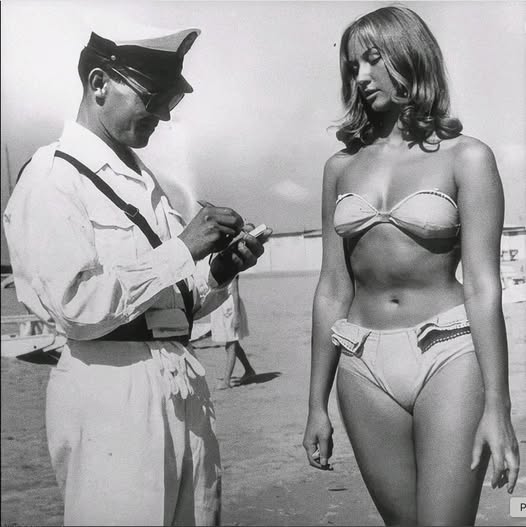At first glance, it might seem like just a simple beach photo—a woman enjoying the sun and sea. But hidden in that image is a century of cultural shifts, debates, and milestones. That small swimsuit once sparked outrage, inspired bans, and led to public debates worldwide. Over time, it also became a symbol of choice, personal freedom, and evolving ideas about style and self-expression.
In the early 1900s, swimwear was focused on modesty. Women wore heavy, neck-to-knee bathing outfits, often made of wool, and strict dress codes were enforced at beaches. Officials measured swimsuits for “compliance,” and tailors were sometimes called to add extra fabric on the spot. Even garments that revealed a woman’s knees could be considered unacceptable.
Change began to take shape in 1907, when Australian swimmer Annette Kellerman wore a one-piece suit that revealed her arms and legs. Whether or not the story of her arrest is entirely accurate, the moment became a symbol of boldness. Kellerman went on to launch her own swimwear line, turning swimwear into a statement of personal style.
By the 1920s, the flapper era ushered in a spirit of independence, and swimwear designs followed suit. Movements like California’s “skirts be hanged” campaign encouraged freedom of movement over restrictive clothing. Comfort and practicality began to win over strict rules.
Continue reading on next page…
